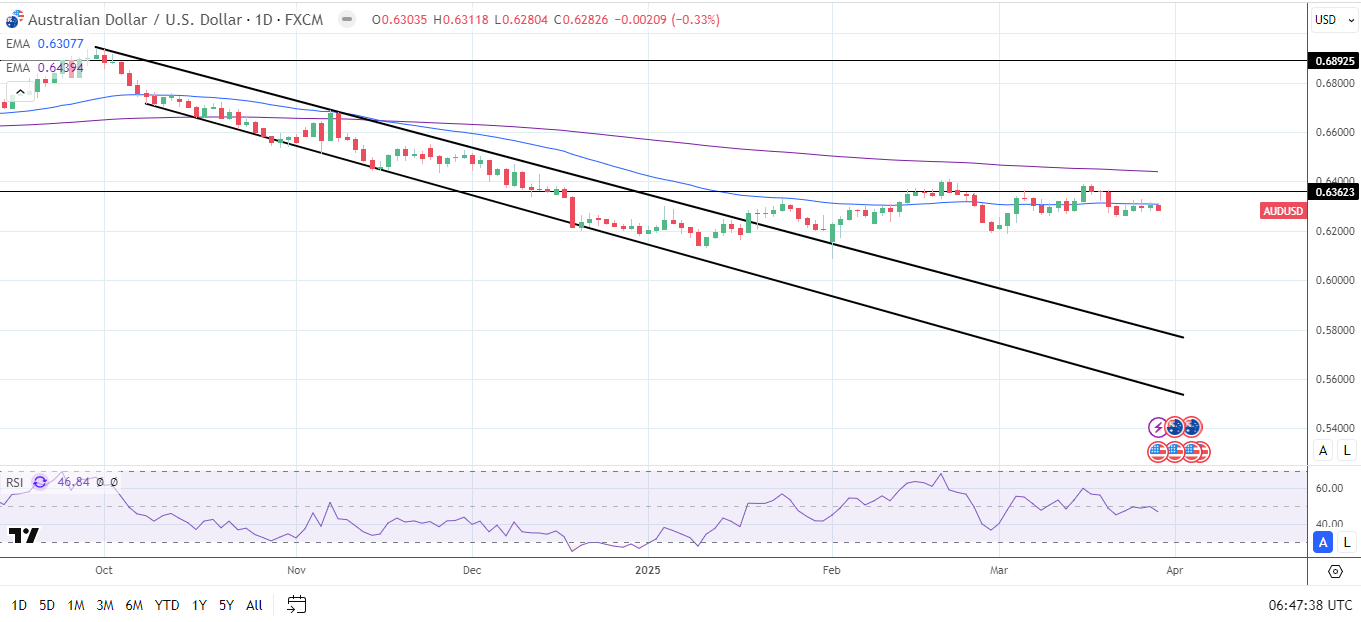 Shifting to AUD/USD, China’s economy remains a key influence on market risk sentiment and demand for commodity-linked currencies.
Shifting to AUD/USD, China’s economy remains a key influence on market risk sentiment and demand for commodity-linked currencies.
A higher NBS Manufacturing PMI reading would signal an improving demand environment, potentially boosting the Aussie dollar. Given China accounts for one-third of Aussie exports, a pickup in output would be a bullish signal. However, a softer Manufacturing PMI print may signal weakening demand, weighing on Aussie dollar demand.
Manufacturing sector data from China is crucial, given Australia has a trade-to-GDP ratio above 50%. However, concerns about US tariffs on global demand could limit the positive effect of upbeat Chinese data on the Aussie dollar.
Following a 25% tariff on all vehicle imports into the US, markets are also watching for reciprocal tariffs. Rising trade tensions could hurt sentiment and support a more dovish RBA outlook.
In February, RBA Governor Michele Bullock commented on global trade and tariffs, stating:
“Global trade uncertainties and tariff threats remain unpredictable, with economic impacts dependent on implementation and market reactions.”
Australian Dollar Daily Outlook: US Economy and Tariffs in Focus
During the US session, upbeat US economic indicators could curb multiple Fed rate cut expectations. A more hawkish Fed rate path may widen the US-Aussie interest rate differential in favor of the US dollar. In this scenario, the AUD/USD could drop toward $0.62500.
Conversely, weaker data may raise concerns about the US economy, supporting a more dovish Fed rate path. A narrowing in the rate differential could drive the AUD/USD pair above the 50-day EMA, bringing the $0.63623 resistance level into play.
Investors should also monitor tariff-related updates. A further escalation in the global trade war could trigger a flight to safety, driving US dollar demand. Risk-off sentiment would weigh on the AUD/USD pair, bringing sub-$0.62500 levels into view.













